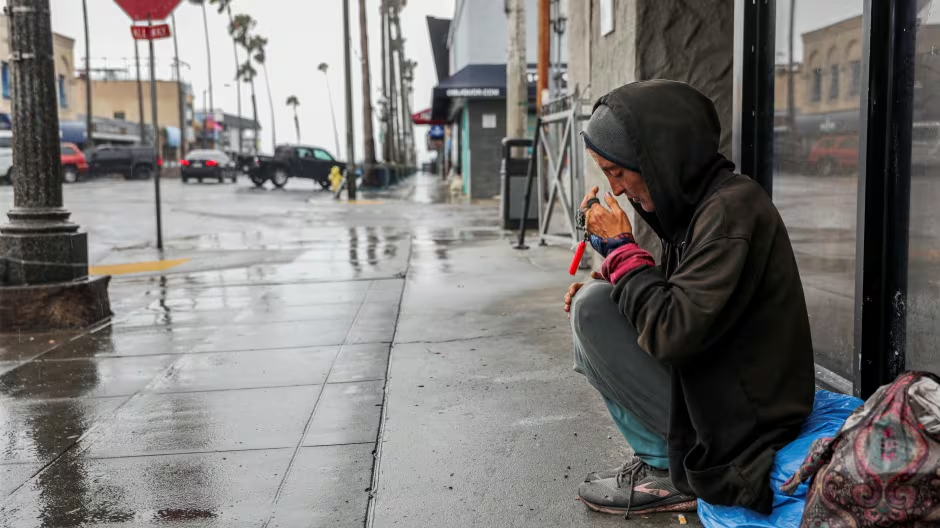
How We End California's Homeless Crisis
-
Supreme Court Ruling
The Supreme Court's June 2024 ruling allowed politicians to dismantle homeless encampments. Governor Newsom used this ruling to remove the last remaining shelters our homeless had left - their tents. The governor’s actions have only worsened California’s homeless crisis, leaving individuals and families scattered across the state.
-
Petition Governor Newsom
Please sign our petition urging Governor Newsom to grant a coalition of California non-profits the authority to build and govern a sustainable, eco-friendly city of tiny and adobe homes in California City. This initiative will provide refuge, recovery, and community for 120,000 homeless, offering a real solution to end California’s housing crisis.
-
Resolution
As we build the world’s first sustainable, eco-friendly city to resolve California’s homeless crisis, we will also be reducing the impact of encampments on business owners and nearby neighborhoods statewide. This initiative is a win-win for all Californians.
Sign the Petition
Please sign our petition urging Governor Newsom to grant a coalition of California non-profits the authority to build and govern a sustainable, eco-friendly city of tiny and adobe homes in California City. This initiative will provide refuge, recovery, and community for 120,000 homeless, offering a real solution to end California’s housing crisis.
CLICK HERE TO SIGN THE PETITION:
Why the Housing Crisis Ends in California City
Size, Infrastructure, and Location
California City covers over 200 square miles and is four times the size of Anaheim. California City’s population is only 10,000, leaving over 95% of its land vacant. The city already has roads, water, electricity, and an aquifer the size of Rhode Island, making it ready for development without requiring new foundational systems. California City is only 110 miles (2 hours) from Los Angeles and 65 miles (1 hour) from Bakersfield.
Aerial View of California City depicting its geographical location.
Why California City is ideal for this Project
California City's low population density equates to plenty of available space to accommodate an eco-friendly, sustainable city for our 120,000 homeless. The project will be built on the city’s eastern side, which is entirely vacant. Located in the Mojave Desert, California City receives abundant sunshine, making it perfect for solar energy. The desert climate is ideal for eco-friendly construction methods like Tiny Homes, Adobe Homes, and Earthships, which are known for low environmental impact and natural insulation.
Coalition of Non-Profit Organizations
A coalition of experienced non-profits will oversee the city’s development, governance, and rehabilitation programs, ensuring the project addresses homelessness through permanent housing, recovery, and community-building initiatives. The coalition will offer mental health services, job training, and reintegration programs to help individuals rebuild their lives and rejoin society in a thriving community built specifically for them.
California City’s eastern side is entirely vacant. It has roads, water, and electricity, making it more than ready to build the world’s first sustainable, eco-friendly city that will end the state’s housing crisis.
Sustainability and Eco-Friendly Living
Renewable Energy: California City’s vast open land allows the establishment of solar farms and wind turbines to generate renewable energy for the entire city.
Self-sustaining Systems: The project will incorporate water recycling, rainwater harvesting, composting, and waste management systems to ensure the city and its communities are sustainable and self-reliant.
Sustainable Housing: Adobe Homes are built from natural materials such as clay and earth, providing natural insulation, while Earthships are off-the-grid, self-sustaining homes that recycle water and generate energy through solar and wind power.
Decentralized Power: Rather than relying on a single, city-wide electrical grid, microgrids will be established in every neighborhood to generate, store, and distribute energy locally, making the system more resilient to outages or failures in other areas.
Eco-Friendly Construction: Building Adobe Homes and Earthships ensures a low environmental footprint. These homes are energy-efficient, naturally insulated, and often built from recycled or locally sourced materials.
Battery Banks: Each house lot will have a dedicated energy storage system (like Tesla Powerwalls or other lithium-ion batteries) to ensure every home has power at night or during overcast weather.
Self-producing Food Systems: Each house lot will include a greenhouse for residents to grow fresh produce year-round. Every square mile of the city will feature cell-based food facilities providing residents with free beef, pork, poultry, and fish. These sustainable food systems ensure a reliable, eco-friendly supply without relying on traditional agriculture, significantly reducing the city's carbon footprint.
Depiction of the world’s first sustainable, eco-friendly city with tiny homes, adobe homes, Earthships, and greenhouses on every house lot.






